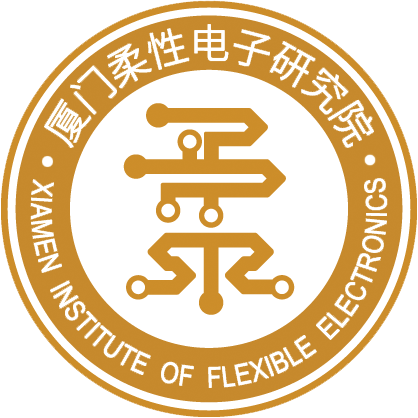

研究背景
可穿戴健康监测设备在过去几年中呈指数式增长,预计在未来十年中会继续连续增长。柔性应变传感器作为运动监测系统的核心,可以有效地将外部机械刺激转化为电信号输出,使其广泛适用于人机交互、虛拟现实技术、 人类健康监测7和残疾人的辅助活动。许多研究人员将石墨基材料、纳米线和纳米棒、和精制的三维纳米结构结合起来,开发高性能的柔性压阻传感器。事实上,具有精确三维结构的柔性电极经常依赖于脉冲定位或表面贴装技术,但很难忽视高成本和高能耗的缺点,这与柔性传感器廉价和大量制造的基本要求相悖。为了简化制造过程,减少不必要的能源浪费,研究人员开发了一系列天然仿生方法,在柔性传感器上获得精确的微观结构,如以含羞草、花瓣、砂纸或人体皮肤为模板,甚至以一些纸张或棉花纤维等天然三维结构材料直接作为敏感层。据预测,下一个研究热点是具有精确结构的纳米材料,其灵感来自于大自然,或以自然物品为蓝本构建的压阻传感器。此外,随着与皮肤有关的癌症研究的进展,对太阳辐射测量的需求,特别是对紫外线的需求,为可穿戴健康管理系统提出了新的要求。未来的紫外线探测器应该对紫外线有反应,同时对其他波长不敏感,具有良好的稳定性,并易于与其他商业设备连接。氧化锌(ZnO)由于其有利的价带结构(3.2 eV) 、易于操作和合成以及对人类没有毒性而吸引了大量的兴趣。作为一种前沿的健康管理和监测系统,在电子设备上同时实现户外紫外线监测和人体健康可视化是一种趋势,但目前仍没有相关报道。
成果简介
为压阻式传感器精确制造三维结构,需要有优越的制造方法或工具,这伴随着耗时的过程和对环境的潜在危害。在此,福建医科大学Ling Li、福州大学Qiaohua Wei和Dianping Tang教授联合发明了一种在石墨烯处理过的棉花和纸质基材上原位合成氧化锌纳米棒(ZnONR)阵列的方法,并构建了高灵敏度、灵活、可穿戴和化学稳定的应变传感器。基于自然界中松树和针叶的结构,混合传感层由石墨烯附着的棉或纸纤维和ZnONR组成,结果显示该传感器在最佳条件下具有0.389、0.095和0.029 kPa-1的高灵敏度以及0-100 kPa的超宽线性范围。该工作以“Bioinspired Self-Powered Piezoresistive Sensors for Simultaneous Monitoring of Human Health and Outdoor UV Light Intensity”为题发表在ACS Applied Materials & Interfaces期刊上。
研究亮点
1. 提出了一种简单而有效的方法来制造三维柔性压阻传感器,这些传感器在微观结构观察方面类似于松针,用于人体运动和健康监测以及紫外线检测。
2. 2.研究发现,石墨烯纤维的吸水和膨胀以及相关的孔径减小和氧化锌的增长对压力传感器的性能是不利的,因此,建立了一个随机线模型来研究不同水热时间对传感器性能的影响。
3. 在石墨烯棉片上单片生长的氧化锌NR已被集成到一个灵活的传感平台,用于户外紫外线光指示,这是首个集成紫外线光检测器和运动监测于一体的传感器。
图文导读
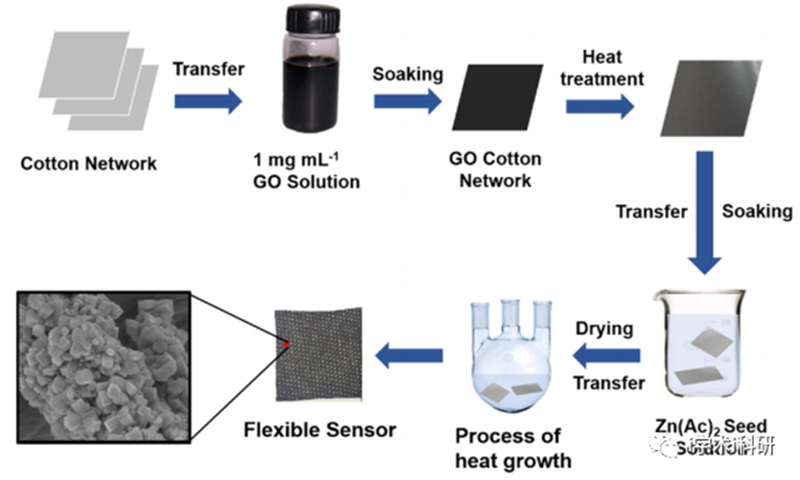
Figure 1. Schematic diagram of the fabrication process of a 3D network structure based on ZnO NRs−graphene cotton, with SEM images of ZnO NRs grown in situ on graphene fibers under 5 h hydrothermal conditions.
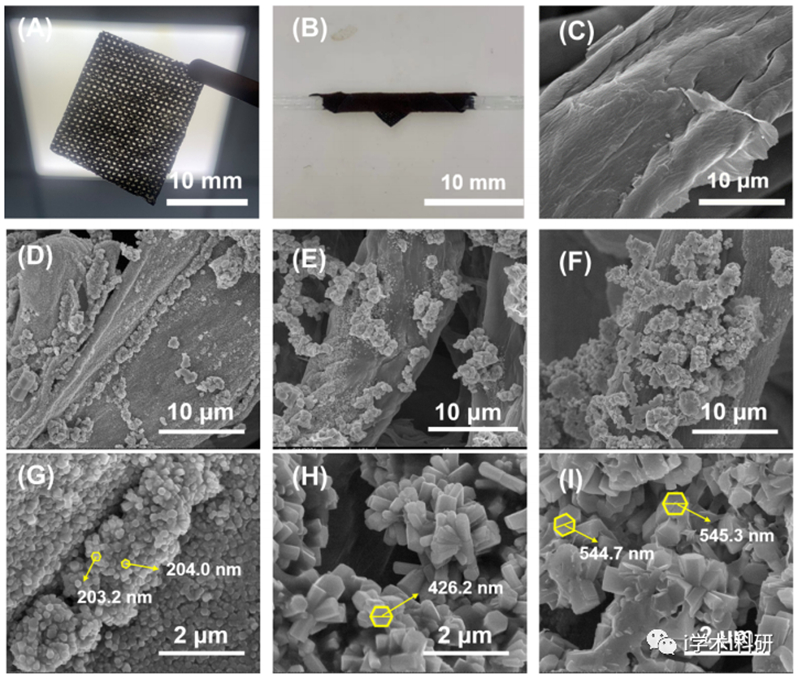
Figure 2. (A) Digital photograph of a flexible piezoresistive sensor with graphene cotton sheets grown in situ with ZnO NRs. (B) Piezoresistive sensor wrapped around a glass rod. (C) SEM image of graphene cotton fibers. SEM images of graphene cotton fibers with ZnO NRs grown for 3 (D), 5 (E), and 7 h (F), and high-magnification images of graphene cotton fibers with ZnO NRs grown for 3 (G), 5 (H), and 7 h (I), respectively.
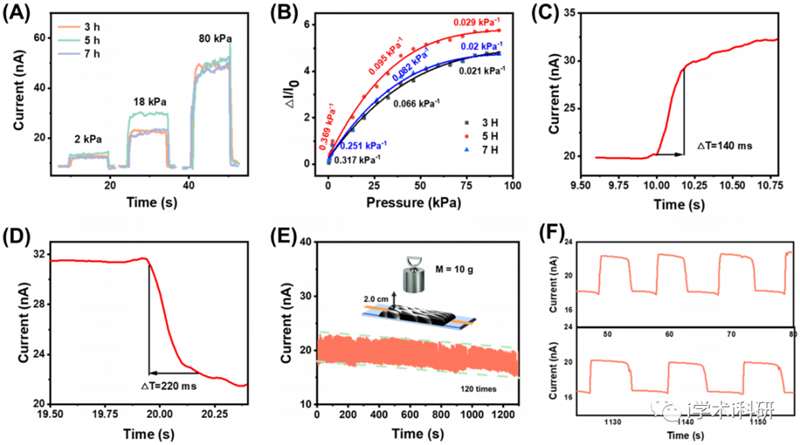
Figure 3. (A) Pressure signal output at various pressure levels. (B) Corresponding currents of graphene-based sensors with ZnO NRs synthesized at different hydrothermal times (3, 5, and 7 h) vary with increasing pressure. (C) Pressure response time of piezoresistive sensors. (D) Recovery time of the piezoresistive sensor. (E) Characterization of sensor stability under constant pressures. (F) Current response image magnified from (E) of the front and back section.
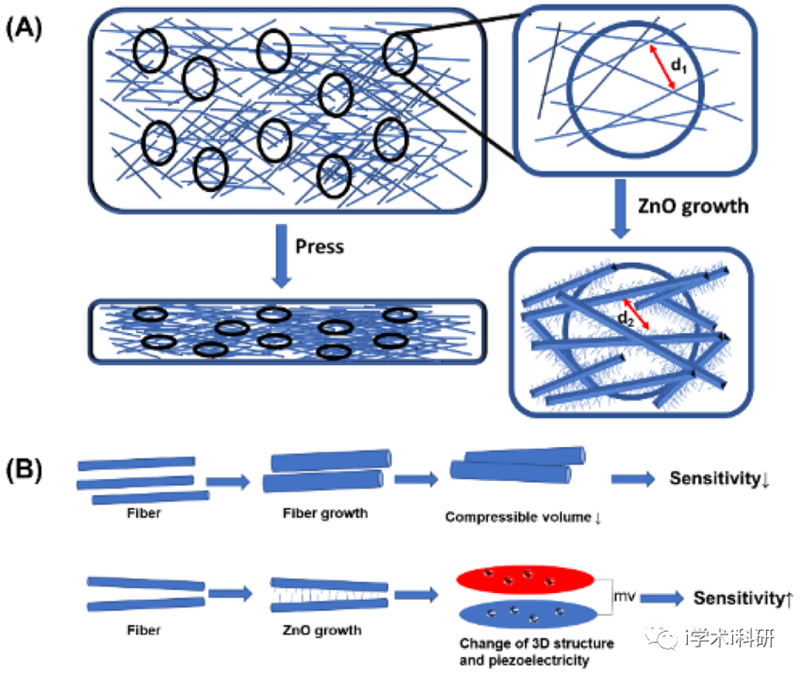
Figure 4. (A) Random wire model of the graphene-based cotton fiber piezoresistive sensor with ZnO NRs grown by a hydrothermal method, leading to the growth of ZnO NRs on fibers and the water absorption and swelling of fibers. (B) Effect of hydrothermal fiber expansion and ZnO formation and growth on both sides of piezoresistive sensor sensitivity.
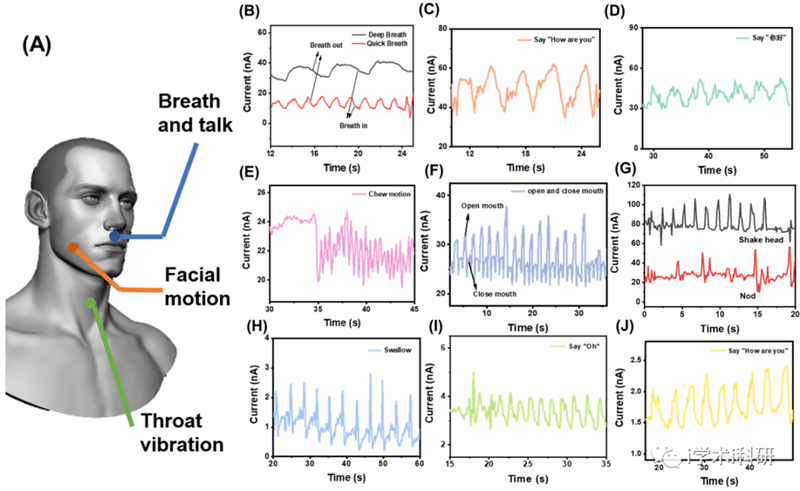
Figure 5. (A) Schematic diagram of facial muscle movement monitoring. Response curves for deep and rapid breathing (B) and saying “how are you?” (C) and “hello” in Chinese (D). Current response curves of masticatory action (E), opening and closing the mouth (F), and shaking and nodding the head (G). Response curves of test subject swallowing (H) and pronouncing “Oh” (I), and “How are you” (J) in an exercise monitoring test.
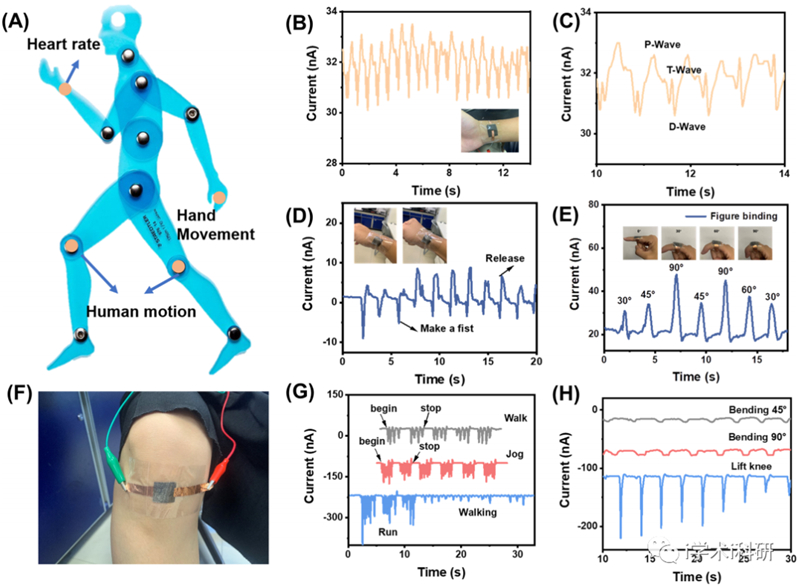
Figure 6. (A) Schematic diagram of human muscle movement monitoring. (B) Response curves for the heartbeat of the tester. (C) Amplified diagram of the heart rate test curve, in which we detected the P/T/D wave of the human heartbeat. (D) Current changes after making and releasing the fist. (E) Change in current caused by 30 to 90° finger bending. (F) Flexible piezoresistive sensor test image of human lower limb movement. (G) Response curves for the movements of walking, jogging, and running in a motion monitoring test. (H) Current response curves for knee bending and raising motions.
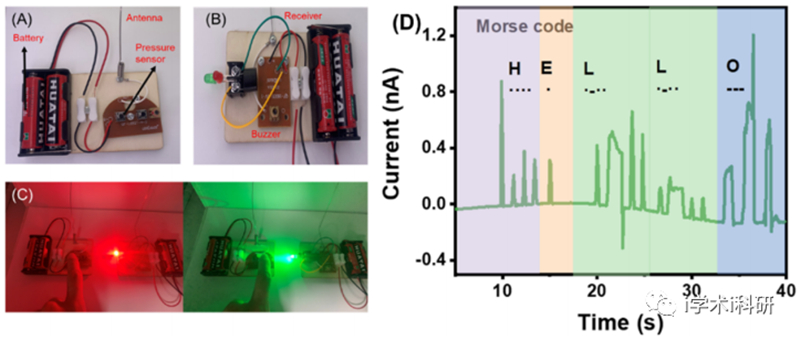
Figure 7. Optical photographs of (A) wireless Morse code message transmission system and (B) reception system. (C) Photograph of the information transfer, where the red and green lights are dimmed and lit by pressing different specially shaped piezoresistive sensors. (D) Response curve of the Morse code “HELLO” obtained by continuous and intermittent pressing of the sensor, recorded using an electrochemical workstation.
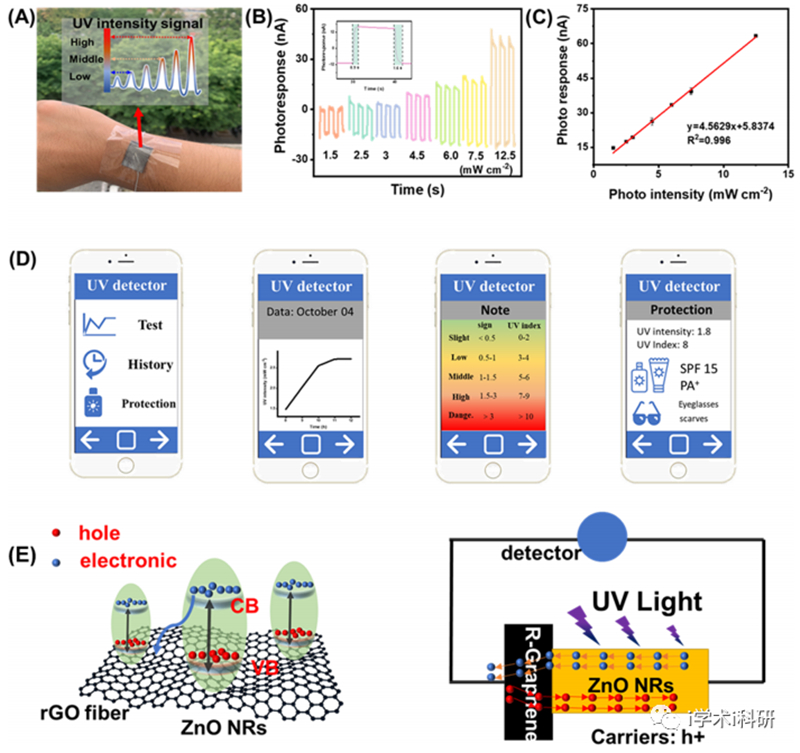
Figure 8. (A) Photograph of UV detection equipment mounted on a human wrist. (B) Photocurrent response of wearable ultraviolet detection devices to different doses of UV light, with an inset figure of UV response time under 4.5 mW cm−2 . (C) Diagram of the linear response of an ultraviolet light detector to ultraviolet light. (D) Schematic diagram of a smartphone readout device that prompts the UV intensity dose and protection information. (E) Schematic diagram of the mechanism of UV light response based on graphene cotton sheets.
总结展望
综上所述,本文报道的压阻式传感器完成了对人体运动活动和健康的监测,更重要的是,它可以实时显示室内外的紫外线剂量,提示是否适合暴露在室外环境中。一方面,通过原位生长ZnO并耦合其压电能力,改进了纤维的原始三维结构,这是一种创新, 同时,氧化锌可以作为光电传感装置的组件被采用。该传感器表现出超宽的可测试压力范围(0-100 kPa),能够监测微弱的压力变化,如呼吸和手腕的脉动,以及运动中的大压力变化,如行走、手腕运动和跑步。由于ZnO NRs和石墨烯纤维的良好组装,获得了动态压力感应和静态压力,这也使可穿戴传感器具有良好的光学响应。此外,这是一种可扩展的方法,用于制备具有三维形态的可穿戴压阻传感器,并且可以在低成本和小规模的情况下生产。
文献链接
Bioinspired Self-Powered Piezoresistive Sensors for Simultaneous Monitoring of Human Health and Outdoor UV Light Intensity, ACS Appl. Mater. Interfaces, DOI: 10.1021/acsami.1c23604
https://doi.org/10.1021/acsami.1c23604
厦门柔性电子研究院
福建省协同创新院柔性电子产业技术分院
地址:厦门市集美区集美大道1995号科技成果转化加速器1期4F
邮编:361024 电话:0592-5366222 邮箱:admin@flex-elec.com
部分图片来源于网络,如有侵权请联系删除